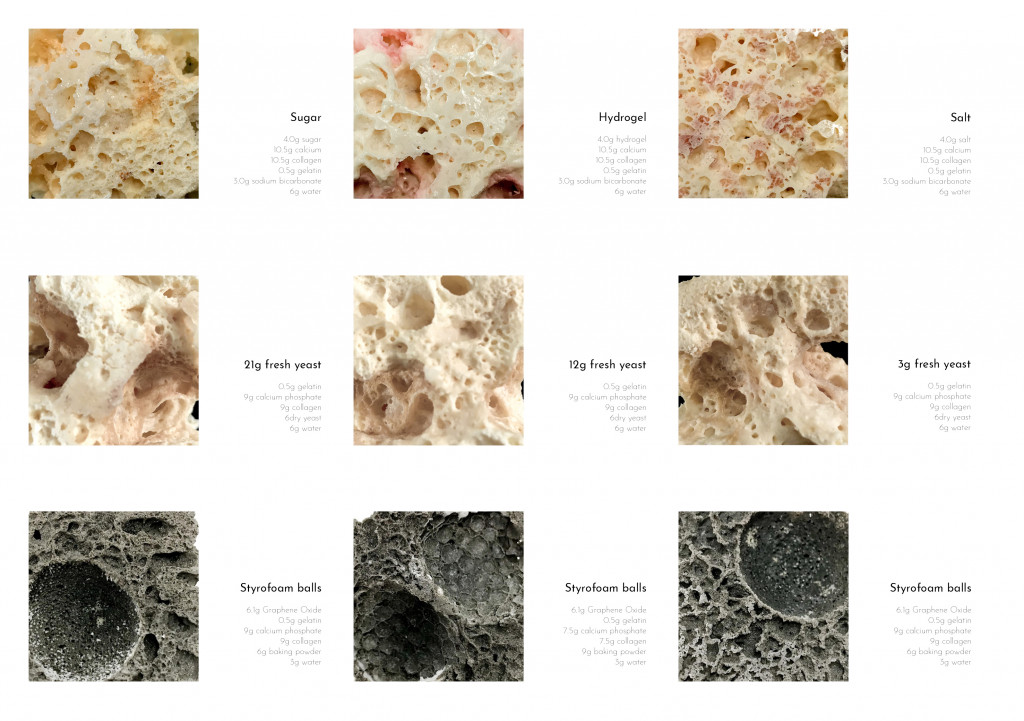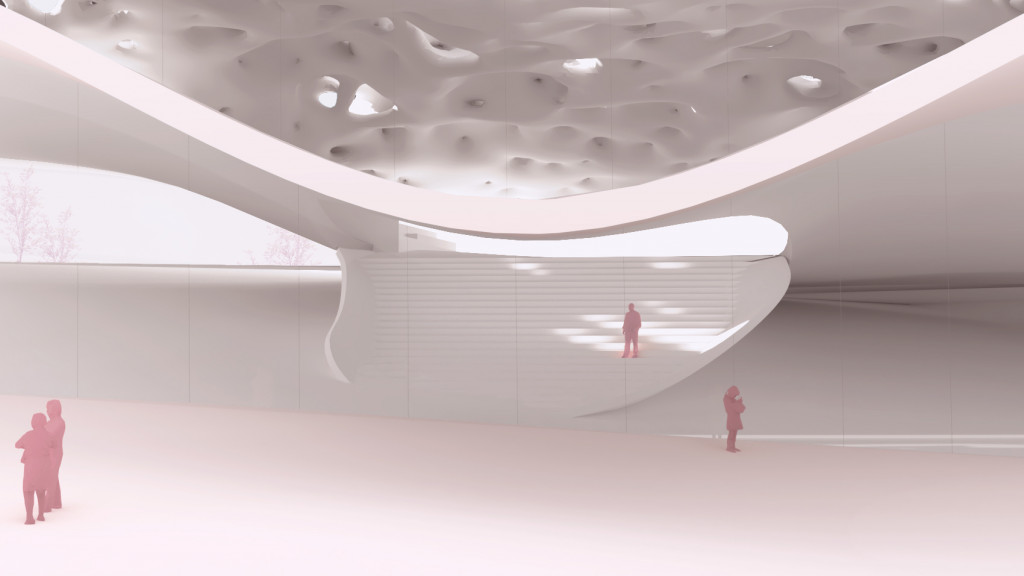Multiscalar Porosity
Context

Objective

Inspiration
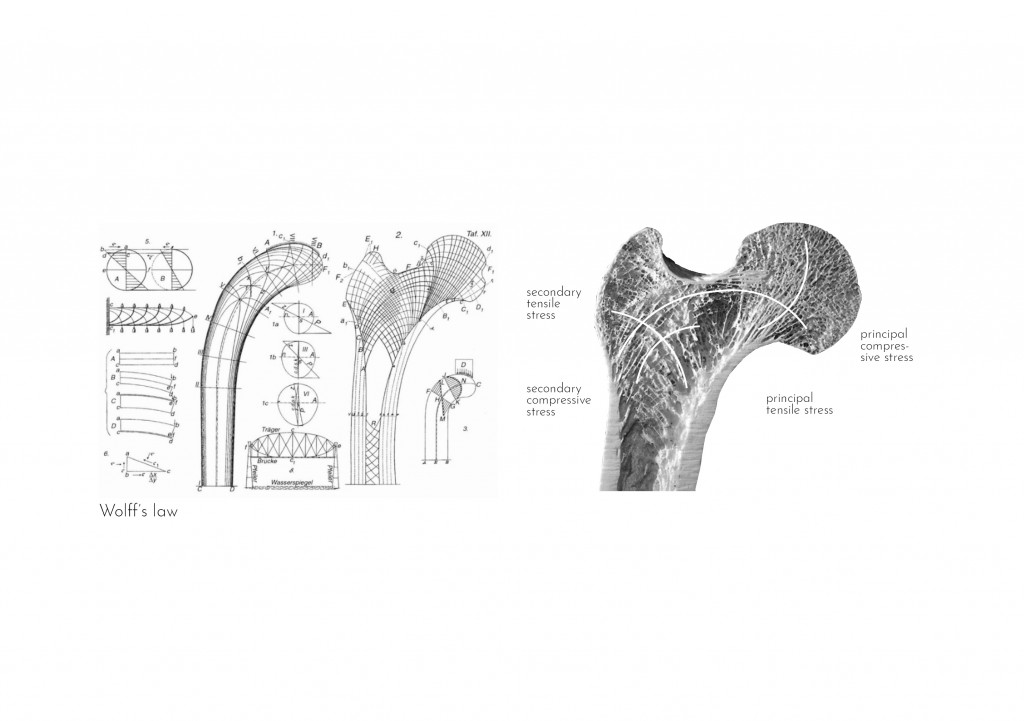
“For each lifestyle, nature takes into account the constraints imposed by the environment to create optimized biological systems in term of mechanical resistance, mass and lifespan. Bone structure is the result of millions of years of evolution. Thus, the bone is still considered as one of the most efficiency structure architecture (cortical and trabecular). Bone cells are able to measure the local stress acting as a bio-mechanical sensor. Bone material structure and its distribution are adapted by collaborative work of osteocyte and osteoblast cells versus the mechanical load. Trabecular bone micro-structure aligned in the principal stress directions (Wolff’s law) is generated by this natural adaptation. Different volume fractions are induced by the local stress level. Finite element analysis performed on the trabecular bone indicate that this material distribution gives better resistance to compression and shear loading. Research works have demonstrated that the porosity shape can be well fitted by an ellipsoid where their eigen directions are aligned with the principal stress direction. A better compromise between lightweight, high stiffness, damage-tolerance and robustness with respect to multiple loadings is obtained by this natural optimization.” (Audibert et al., 2018)
State of the art


Material research
We had several iterations studying the ratios of our base ingredients such as collagen, calcium phosphate, gelatin, sodium bicarbonate and water.
Our first tests focused on the behaviour of “bone inspired ingredients”. Throughout our study we discovered that adding great amount of collagen to the mixture creates high scale porosity, but causes fragility, while a larger amount of calcium phosphate makes the material dense, and strong but not porous. Independently of one another, colagen is fragile while calcium is powdery, but mixed at an equal amount, they bind together with sodium bicarbonate to define a solid, lightweight, spongelike material. Sodium bicarbonate gets activated by water. Upon further testing, we discovered that gelatin adds certainamount of elasticity, thus creating a semi ductile porous material.

Structural enhancement
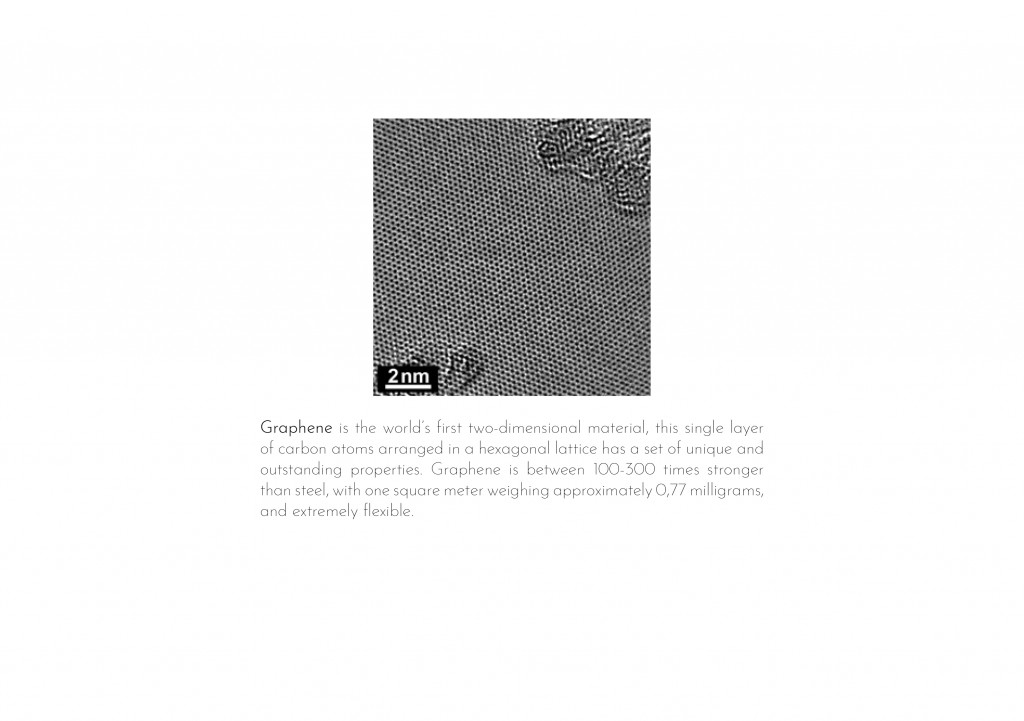
Applying heat
The first part of our research focused on applying heat to the composite as fabrication method in order to obtain a lightweight, porous, structural material.
Structural performance

Bending tests
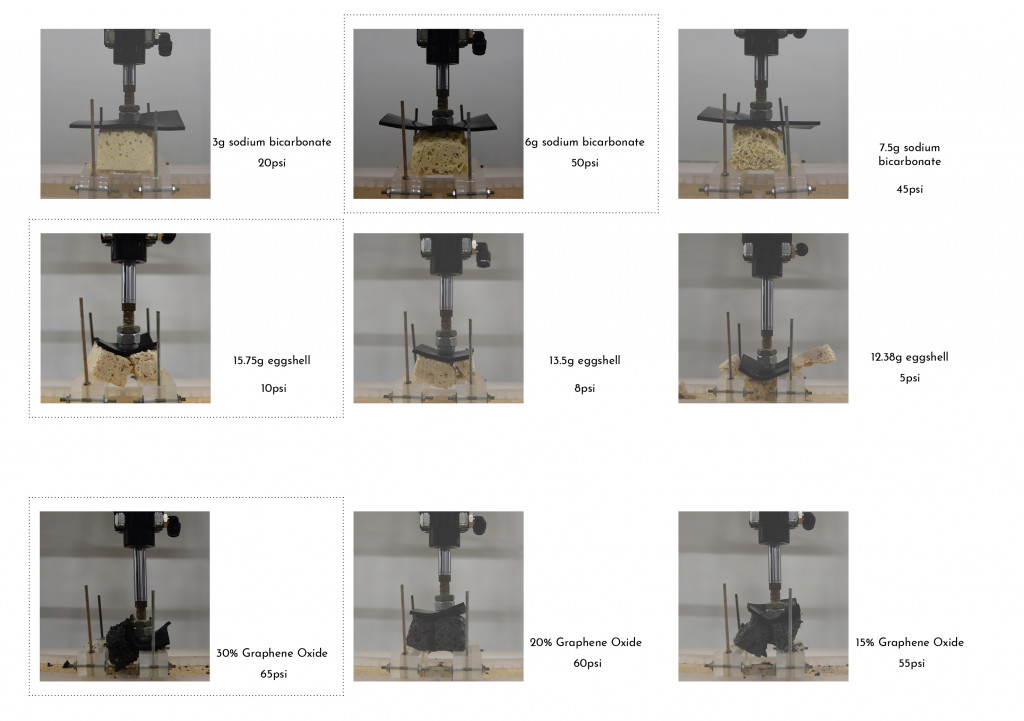
Structural performance
As one of our ingredients, sodium bicarbonate acts at the molecular level, creating gas boubles that later on form porosity within our material. Upon reaction, the substance rises and expands up to 40% of its initial mass. As we discovered before, using 6g of sodium bicarbonate (to amount of ingredients) turned out to be the most successful test. According to out hypothesis, adding more sodium bicarbonate creates higher scale porosity, while using less than 6g results in a less porous outcome. We came upon the recognition, that it is exactly the opposite. The more sodium bicarbonate within the mixture, the smaller sized porous and vice versa.
Compression tests


Scaling up
We defined a porous catalog according to the size and density of the naturally formed boubles by using different amounts of sodium bicarbonate. Since our studies showed that the range is limited we experimented with certain additives such as salt, sugar, hydogel, fresh yeast and styrofoam balls. We tryied to find additives that dissolve while heated. Fresh yeast turned out to be closest to expected. However, the counterintuitive aspect of adding a material to create porpous voids halted this process. Sugar and hydrogel dissolved during the process of solidification, but they got mixed up with the base material that changed its consistency. In the case of styrofoam balls the fact of adding a disadvantageous material such as plastic stopped us from further usage. In the same time triggered further research in order to find a sustainable solution for creating high scale porosity.
Unlike what we expected we had to face difficulties by scaling up our prototypes. As we added higher amount of matter it took longer time to solidify, while the bouble formation happened at the same speed asin the case of smaller samples. It resulted in collapse of the material before it could have solidified. This led to the second phase of our research, where we tested lyophilization as fabrication metod.
Failed tests
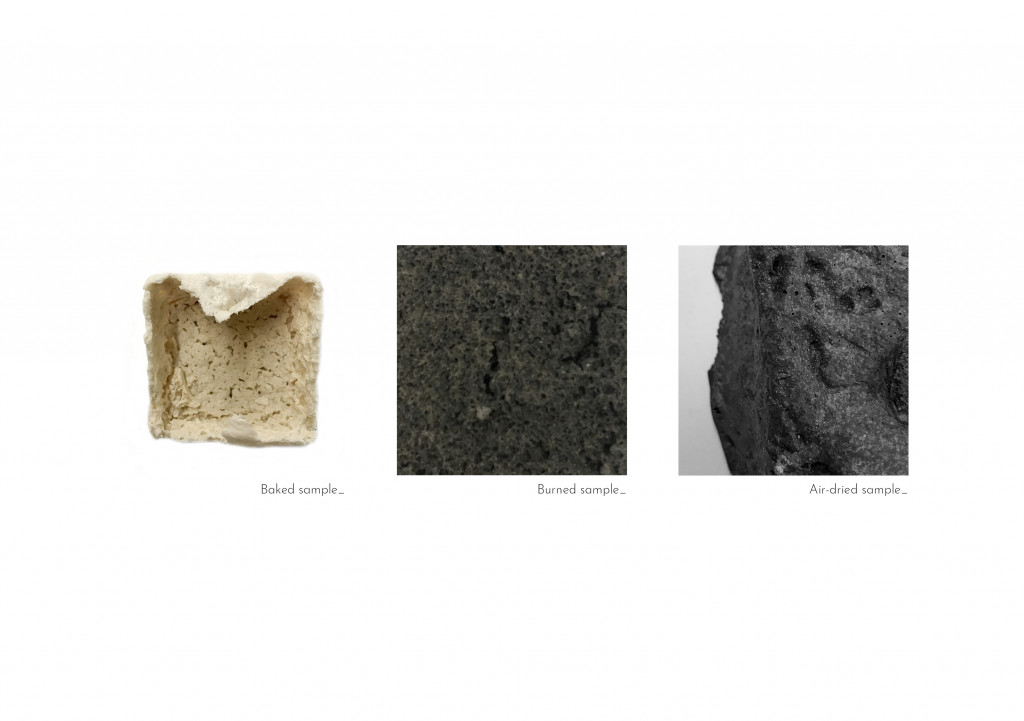
Finalised material composite

Lyophilization

Fabrication process
After facing difficulties scaling up our samples we investigated further fabrication methods. Lyophilization(freeze-drying) is a methodology where liquid sublimates from the frozen material. Sodium bicarbonate reacts with water, naturally forming porosity in the same way as in the first phase of our research. By adding ice as high scale porosity forming agent we can obtain an optimized material system based on structural analysis. Ice as the pore generator results in no scafolding construction waste as the water can be reused in a closed loop system. During this phase of research we shifted to graphene oxide made by ourselves. Since graphene needs a binding agent we used sodium alginate in the mixture that also replaces gelatin in our composite.
In case of freeze-drying the size of the sample is only limited by the measurements of industrial freezers and freeze-dryers.
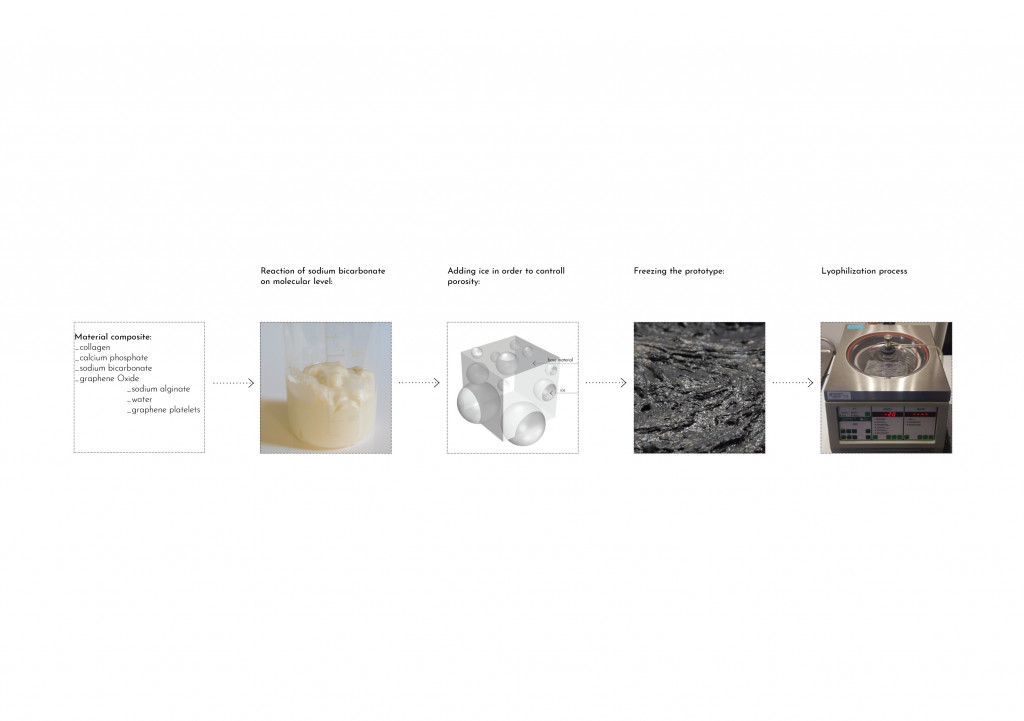

In case of freeze-drying the size of the sample is only limited by the measurements of industrial freezers and freeze-dryers.
Architectural application
Material optimization
As previously mentioned, our system works based on structural analysis where
we can difine areas of higher and lower stress withing the structure. Later we can assign the required amount of material accordingly.
Since the material is not limited by size or shape, it can be used in any type of structure from the conventional architectural applications such as beam, wall to more advanced shapes.
Structural analysis

Prototype

Material optimization

Form finding


Structural analysis

Conclusion
The need for material saving construction methods is a must to lower the amount of construction waste produced every year. We challenge the scale at which such a proposal can develop, and showcase a material that expands in volume at the molecular level as well as at a larger material scale. The combination of lightweightness and porosity as well as mechanical enhancement results in our material proposal. The bone inspired substance is graphene induced for mechanical enhancement and contains sodium bicarbonate as the generator of the smallest porosity. The ice as larger scale porosity is controlled and finely placed as it lyophilizes through the freeze-drying process; this adds further lightweightness as areas under less stress and tension become material saving.
References
Dfabhouse.ch. (n.d.). SMART SLAB – DFAB HOUSE.
Innochain. (n.d.). Fabricating Complexity in Concrete with #iceformwork – Innochain.
Watts, J. (2018). Concrete: the most destructive material on Earth.
Fuente, J. (2018). [online] Graphenea.
U.S. Food and Drug Administration. (n.d.). Lyophilization of Parenteral (7/93).
Audibert, Clément & Chaves-Jacob, Julien & Linares, Jean-marc & Lopez, Quentin-Alexis. (2018). Bio-inspired method based on bone architecture to optimize the structure of mechanical workspieces. Materials & Design. 160. 10.1016/j matdes.2018.10.013.
D. Dimov, I. Amit, O. Gorrie, M. D. Barnes, N. J. Townsend, A. I. S. Neves, F. Withers, S. Russo, M. F. Craciun. (2018) Ultrahigh Performance Nanoengineered Graphene–Concrete Composites for Multifunctional Applications. Adv. Funct. Mater. 2018.28, 1705183.
Developed in: Digital Matter, IAAC, 2019
Project by : Eszter Oláh – Sophia Molnar Di Biase – Sara Kelliane Alves Da Costa – Anaisa Franco
Faculty: Areti Markopoulou, David Leon, Raimund Krenmüller
Student Assistant: Nikol Kirova




